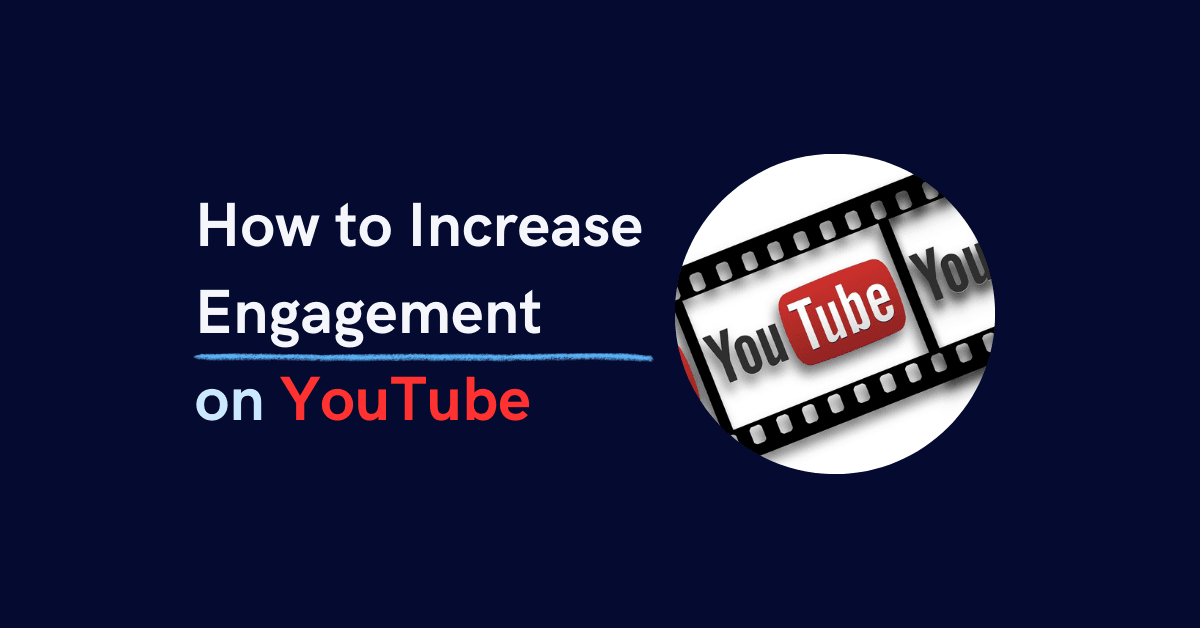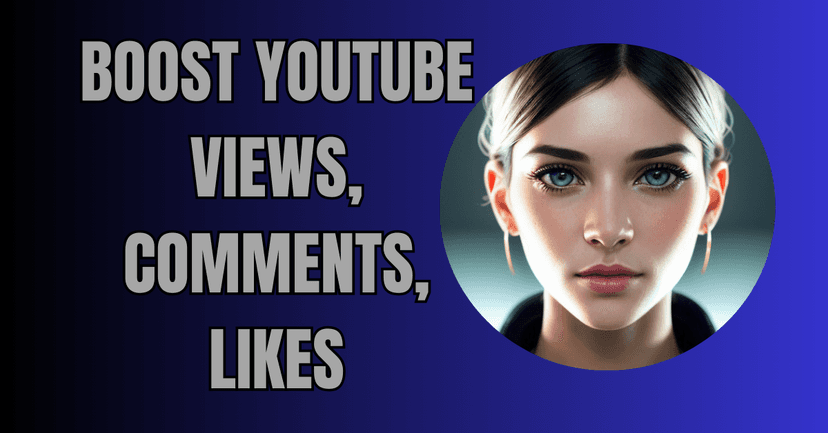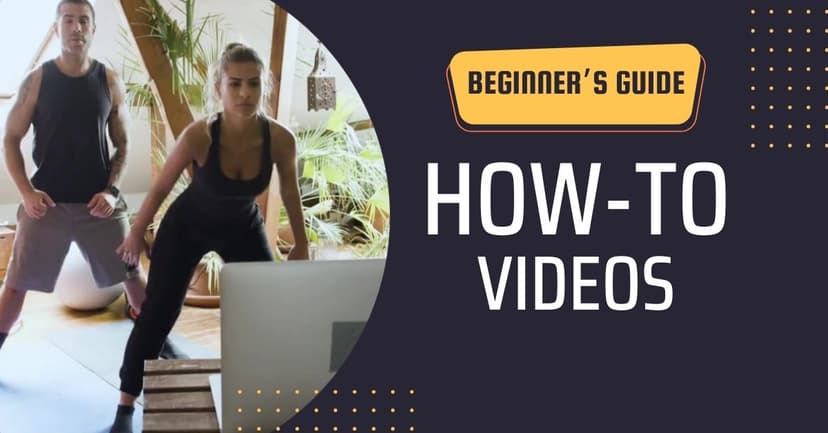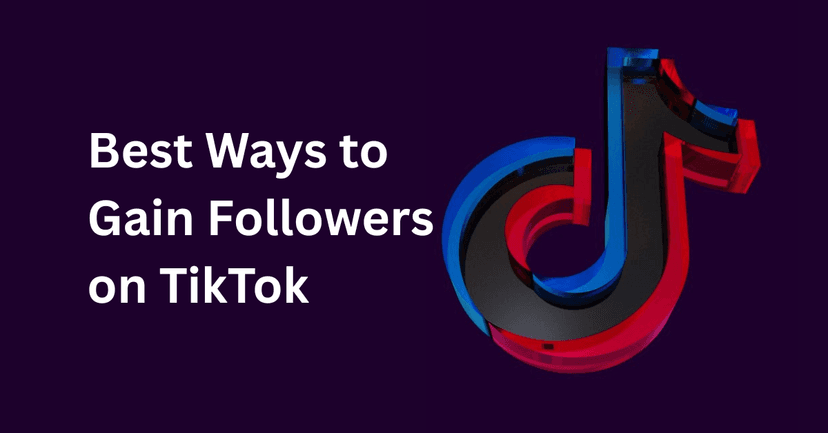
How to Increase Engagement on YouTube: 7 Proven Tactics
Boost engagement rates on YouTube to connect with your audience and grow your social media channel. Here's a post on how to increase engagement on YouTube.
Boosting engagement rates on YouTube is a surefire way of connecting with audiences, building healthy relationships (although virtual), and growing a highly successful social media channel.
Unfortunately, how to increase engagement on YouTube remains a puzzle to many first-time channel owners. Worry no more if you’re in a similar position.
Consider this post a guide to bumping YouTube engagement rates through the roof with seven proven tactics.
Moreover, we will throw in a couple of bits of knowledge to help increase your YouTube video interactions. Let’s start.
What Is Engagement on YouTube?
Learning how to get more engagement on YouTube starts with appreciating what “engagement” means.
The term implies subscriber-related activities on your YouTube channel.
For example, a YouTube user smashing the “subscribe” button and bell icon is “engagement” as are viewing, liking, sharing, and commenting.
Knowing how many YouTube users (subscribers and non-subscribers alike) interact with your videos is necessary to determine your channel’s success.
After all, everyone wants to become a YouTube celebrity (read, millions of subscribers and viewers).
Reach this target, and YouTube will reward you handsomely.
How to Calculate Your YouTube Channel’s Engagement Rate

Although checking the views and subscriber counts can give you an idea of whether your YouTube channel is successful, it needs to be more accurate.
A more valid answer lies in your channel’s engagement rate. But what is engagement rate on YouTube?
YouTube engagement rates reflect the relationship between impressions and interactions expressed as a percent.
As a rule, the higher the value, the more meaningful (and successful) the YouTube channel is.
Learning how to calculate engagement rate on YouTube is vital to knowing the channel's success. We can simplify the calculation using the following formula:
Engagement Rate = (Total interactions ÷ Total impressions) x 100
Interactions reflect the number of views, likes, shares, comments, new subscribers, dislikes, and lost subscribers on your YouTube channel. Calculating multiple metrics can be daunting.
Hence, most YouTubers focus only on the comments, shares, and likes (you’re welcome to try to calculate other metrics).
Meanwhile, impressions describe how frequently the YouTube video thumbnail or title appears on video suggestions or search engine results.
Google requires impressions to last at least a second on search engines and at least 50% visible on the display. You can check this metric on YouTube’s “Reach” analytics tab.
Let’s consider an example.
Suppose YouTube Analytics shows your video has 10,000 impressions and 1,000 interactions (i.e., shares, likes, and comments). Dividing 1,000 by 10,000 produces 0.1.
Multiplying 0.1 by 100 gives us 10.0. Hence, your YouTube video's engagement rate is 10%.
So, what is good engagement rate on YouTube?
Experts say a 3% to 7% YouTube engagement rate is commendable.
Hence, you can aim for at least three interactions for every 100 impressions. You could always target a higher number, of course.
7 Proven Ways to Increase Engagement on YouTube

Hitting at least three interactions per 100 impressions sounds easy. However, you can increase YouTube engagement with the following seven tactics.
1. Prioritize engagement
We get it.
You want to create many high-quality videos to post on YouTube as frequently as possible.
Unfortunately, focusing too much on video production can flatline engagement rates.
Sure, people will love your content.
However, they would like you more if you could spend time responding to their comments, asking them questions about the video, and engaging other YouTube channels and users.
Please note that YouTube places "recent comments" on the analytics dashboard front and center.
The platform wants timely interactions and responses.
And if you don’t have engagements to “react to,” you can always post updates on the YouTube Community tab. It should boost engagement by reminding subscribers of developments.
2. Promote your content
Increasing YouTube engagement requires thinking outside the box (outside YouTube, of course).
Hence, you might want to repost your YouTube videos on different platforms.
For example, you could post your YouTube video’s link on Facebook, Pinterest, LinkedIn, TikTok, and Instagram.
Some viewers of these platforms might not necessarily watch YouTube.
Reposting content links on these channels could improve engagement (i.e., views, comments, and new subscribers).
Alternatively, you can embed the links in your website, blog, or landing page. You could also attach the video to email messages.
3. Publish more YouTube Shorts
Do you know that over 70 billion people watch YouTube Shorts daily? These creations don’t last more than a minute. Nevertheless, they are catchy! But why?
A University of California study revealed that the average adult can focus on something for only eight seconds, with teenagers having a slightly longer 12-second attention span.
YouTube Shorts allows users to finish a clip without getting bored.
We must point out that creating more Shorts won’t necessarily increase engagement.
However, it offers more chances for people to notice and interact with your creations. That influences engagement rates indirectly.
4. Try other video ideas
Watch your videos.
Do you get bored viewing the same format over and over?
Are you using the same characters for every clip you produce?
How about the presentation style, video lighting, and audio-visual elements?
You could experiment with other video presentations, including production. For example, you could create product comparisons (i.e., A vs. B), tutorials, how-tos, reaction videos, and reviews.
You can also replace live talent with AI-generated avatars and presenters.
For instance, you can check out Puppetry’s AI-powered image and video generator to bump your YouTube content.
Animate baby portraits or dog pictures, watch viewers leave funny comments, and share the clips on their social networks.
5. Publish videos consistently
Increasing YouTube engagement requires periodic posting of fresh, high-quality content.
Although you can publish randomly, your subscribers would appreciate it less.
Why? They might miss a video upload because they don’t know when you will publish next.
Scheduling your YouTube uploads makes sense.
It allows subscribers to anticipate your creations and prepare for them.
You could add teasers in videos, drumming excitement for your future clips. This technique works exceptionally well with series-type videos.
When should you schedule video uploads? You should determine the time of day your subscribers are on your channel.
As for the video format, we recommend a balanced approach consisting of three short-form clips and one long-form video weekly.
6. Be creative with thumbnails
YouTube curates content differently than other social media platforms. It uses thumbnails (small pictures) on the search or suggested video page.
Will YouTube users click on your video thumbnail if it looks bland and uninviting?
Here’s the thing.
YouTube users must click on thumbnails to leverage impressions.
The more frequently your videos appear on YouTube’s suggested videos list, the higher your impressions. Unfortunately, engagement rates suffer without interaction.
Adding AI-generated puppets to your YouTube thumbnails should increase engagement by making the “preview” more appealing.
You could use dynamic colors (i.e., bright orange and vibrant blues) to draw attention. Please remember to add easy-to-read text across different devices.
7. Optimize content for SEO.
YouTube isn’t just any ordinary video-sharing and social media platform.
It’s also a powerful search engine for internet users who want the most exciting visual presentations for their needs.
As far as organic Google search is concerned, the search giant also indexes videos on results pages.
Studying and integrating the best search engine optimization (SEO) techniques and tactics into your YouTube video creation will boost your content through the ranks.
But why do you want that?
The higher your YouTube video thumbnail or URL lands on the SERP, the higher the chances of YouTube users seeing (and interacting) with it.
What can you do?
Analyze your video title and ensure it is SEO-friendly.
Add appropriate search-intent keywords to your video description.
You should also add long-tail, geo-targeted, seed, and LSI keywords.
Please use relevant hashtags on your YouTube videos to increase audience reach and boost engagement.
Lastly, promote your content on various platforms and channels to drive traffic from outside YouTube.
FAQs
How do I compare my YouTube channel against niche competitors?
Pick three to five YouTube channel competitors with nearly identical content focus, subscriber count, and production value.
These factors level the playing field and allow you to compare and analyze engagement metrics (i.e., average subscriber views, comment ratio, and engagement rate per impression).
A competitive analysis will help you determine whether your engagement rate is higher or lower than others in the same field.
How will I know what my YouTube audiences like best?
Knowing what YouTube video content types your loyal followers like best will help focus attention on creating such videos.
Like benchmarking against competitors, you can compare top-performing playlists, relative engagement metrics, traffic sources, and subscriber vs. non-subscriber views within your YouTube channel.
Conclusion
Boosting YouTube engagement rates might seem challenging, but only in the beginning.
We recommend starting with the most obvious – creating high-quality videos.
Monitor your posts and interact with every comment, like, new subscriber, share, and other engagement activities as often as possible.
You can expand to include other tactics and watch your YouTube channel's engagement rates soar.
Related Articles
Discover more insights and expand your knowledge with these hand-picked articles

Boost Views, Comments, and Likes: 7 Expert Tips on How to Increase Engagement on YouTube
Discover the secrets to YouTube success with these seven expert tips to boost engagement. Master the art of increasing views, comments, likes, and shares, while building a subscriber base.

A Beginner’s Guide on How to Create How-To Videos 2024
Here’s a beginner’s guide on how to create how-to videos. Learn the steps and leverage these videos’ expansive viewership. Check this out today!

Best Way to Gain Followers on TikTok: The Proven Methods to Grow Your Influence
What’s the best way to gain followers on TikTok? This guide will show you proven methods to do it and help you engage with your audience. Let’s get started.
Ready to Create Amazing Content?
Join thousands of creators who use Puppetry to bring their ideas to life. Start creating engaging content today with our AI-powered platform.